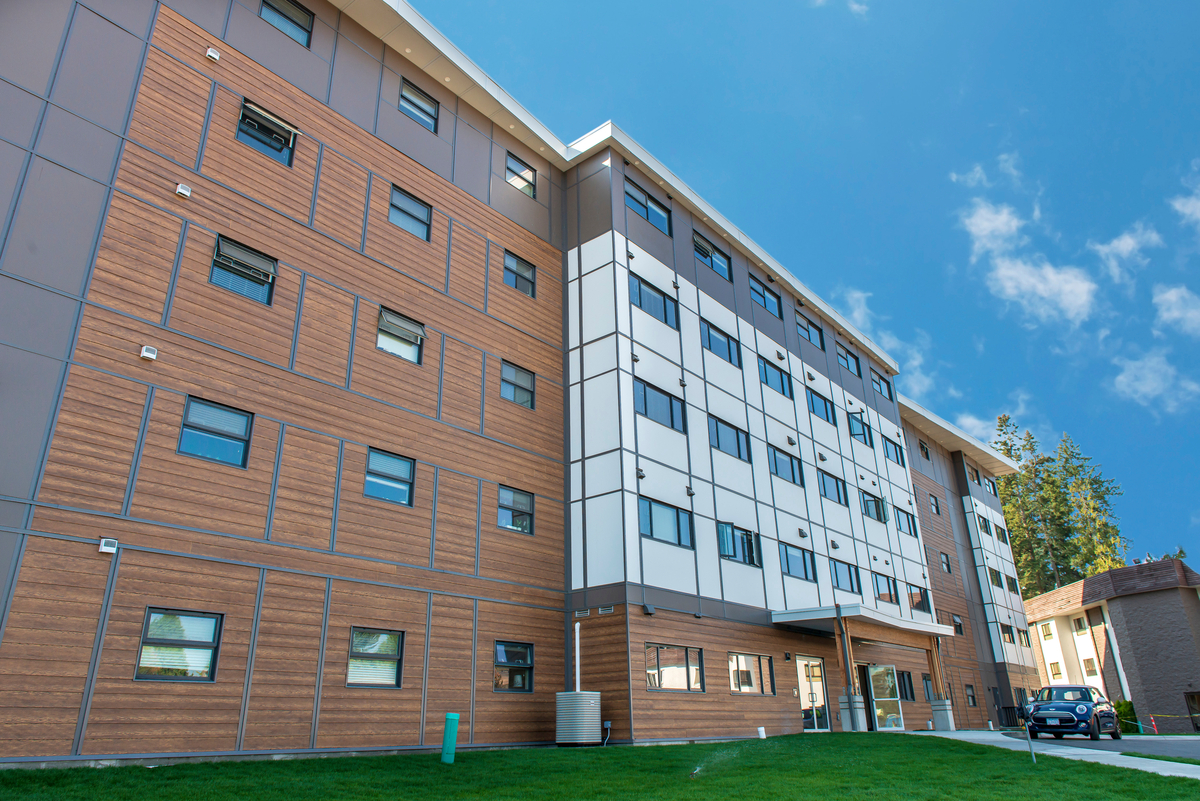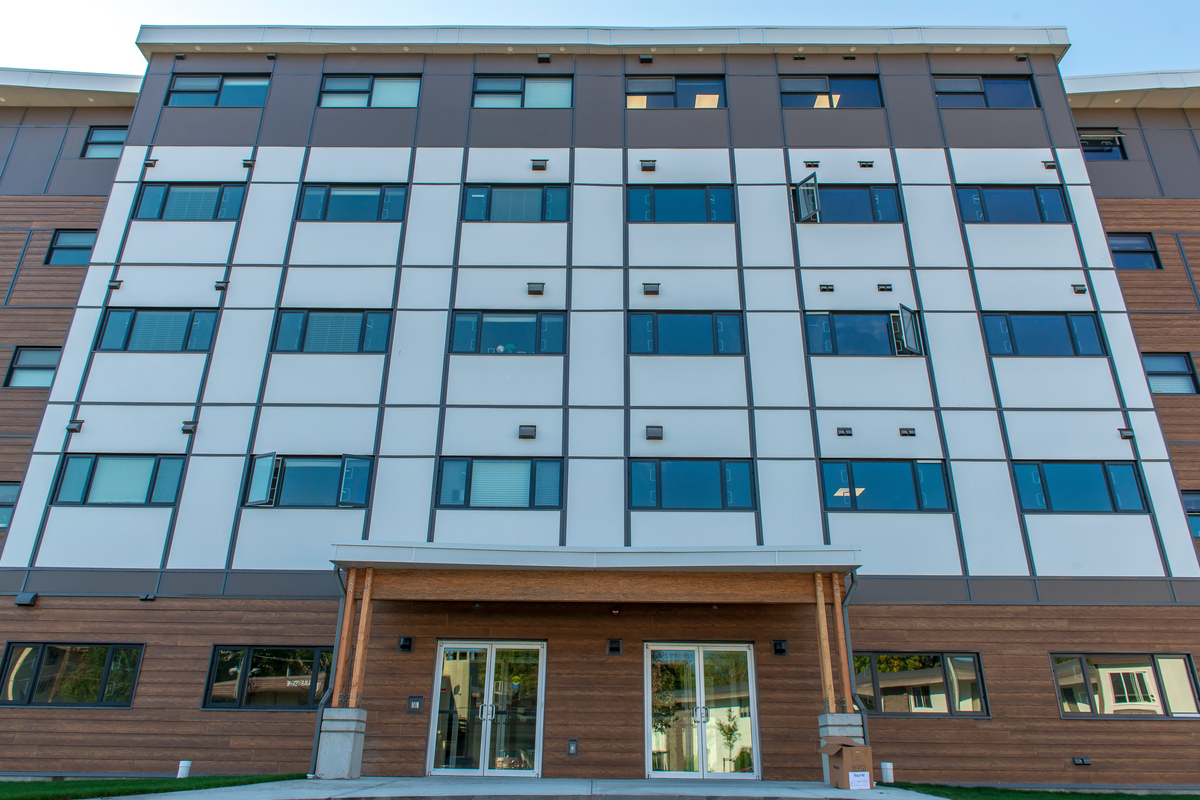Modular construction supported a growing student population
Trinity Western University needed to expand student housing, but timing was tight. With just nine months from contract signing to students moving in, Jacobson Hall, a 220-student housing facility, was built using modular construction and completed in almost half the time it would have taken to build using conventional construction.
- The student residence was built from 90 light-frame wood prefabricated modules.
- Each module took about 14 days to finish at the factory, a process which is 50% faster than conventional construction.
- The residence opened in time for the start of the 2018 school year; 3.5 months after the first module was put in place.
Trinity Western University (TWU) had a rapidly growing student population but was short on housing. It only had on-campus housing available for fewer than 25 per cent of its 4,000 students. Jacobson Hall was built in just nine months, and at the time of its completion in 2018, was the tallest wood-framed modular housing complex in Canada.
Modular made for an efficient and nearly complete package
The Trinity Western University Jacobson Hall residence was built from 90 light-frame wood modules, 3.7 metres wide and in lengths that varied from 9.8 to 18.9 metres. Modular construction brought several advantages to the project, including a faster schedule, more predictable construction costs, improved quality control, reduced site impact and greater construction efficiency. Wood-framed modular construction also provided improved energy efficiency and noise control, since the space between the modules as well as the walls, floors and ceilings of the modules themselves were insulated.
Putting all the pieces together
When the modules were lifted into place, the units contained sprinkler systems, plumbing, electrical, flooring, fixtures, and even beds, desks and mattresses. It took 14 days to manufacture each of the 90 modules inside a controlled facility, a process that is significantly faster than conventional construction. Once each unit was assembled, it was then shipped by truck to the campus and craned into place. With five to 10 workers on site at any given time, assembly of the modules began mid-May and was finished by mid-July. Timing was key to the project to meet the start of the fall semester. Students moved into the new hall in September 2018.
Canada’s tallest modular housing project at the time of construction
Trinity Western University Jacobson Hall was the first five-storey modular project built in Canada, and wood met the seismic, wind and structural performance requirements. For example, designers tightened wall stud spacing on the bottom two floors and used select Douglas-fir dimension lumber, dried to a lower moisture content than typical to minimize framing impacts from shrinking and swelling. For seismic requirements, crews secured the modules to the concrete foundation using Anchor Tiedown System (ATs) rods. They also increased the number and length of seismic straps.
An abundance of wood
Jacobson Hall was framed completely with wood. Cross-laminated timber (CLT) was used to frame the elevator shaft; modules were then connected to either side of the structure. The design team chose 2×12 floor joists, spaced 16 inches on centre, for the floors and the bottom modules, to accommodate thicker insulation (R40) against the slab. Floors on the upper modules used 2×10 dimension lumber, and some were doubled to handle loading. Glue-laminated timber (glulam) beams framed the openings and common areas in each of the suites and floors were covered in plywood sheathing and underlay to accommodate any type of floor cover.
“One of our goals is to provide attractive, comfortable and affordable housing that will foster an environment to promote the success of our students. This new residence helps to accomplish that.”
Scott Fehrenbacher, Senior Vice President, External Relations, Trinity Western University





